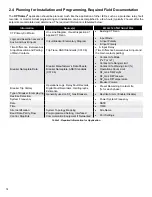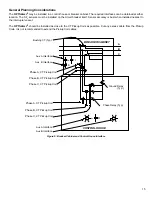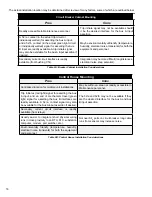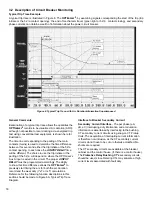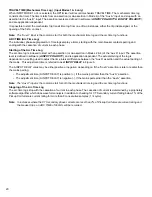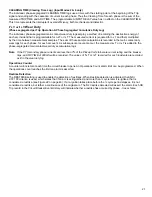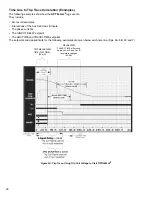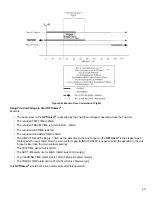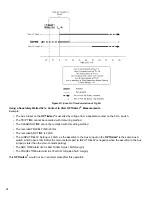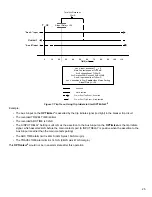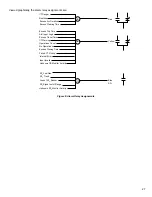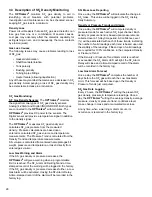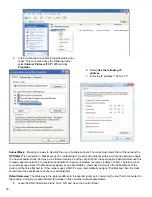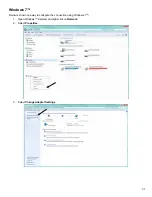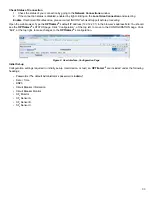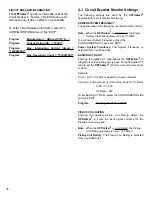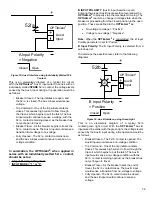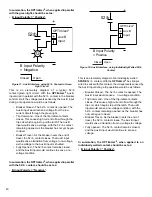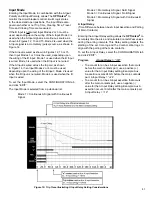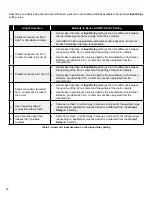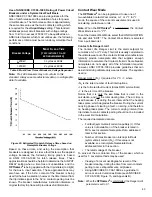
28
3.3 Description of SF
6
Density Monitoring
The
OPTI
mizer
2
monitors SF
6
gas density to aid in
identifying circuit breakers with potential problems.
Investigation and maintenance can be scheduled sooner,
keeping SF
6
gas loss to a minimum.
Density Loss
Power circuit breakers that use SF
6
gas as a dielectric can
lose gas from one or a combination of several causes.
Lost gas may adversely affect the dielectric capability for
extinguishing an arc, and consequently, the main contacts
by erosion (wear).
Gas Loss Causes
The following issues may cause problems leading to loss
of SF
6
gas:
• Gasket deterioration
• Shaft Seal deterioration
• Tank porosity
• Bushing porosity
• Tubing & pipe fittings
• Heater failure (allowing liquefaction)
Any of these may manifest themselves as a decrease in SF
6
gas density. Accompanying a loss of SF
6
gas density may
be a detectable increase in arc duration.
SF
6
Gas Monitoring
SF
6
Gas Density Sensors
The
OPTI
mizer
2
monitors
the signal from two types of SF
6
gas density sensors:
Analog (4-20mA) and Digital (INCON DSDP). Both types
are connected to the
OPTI
mizer
2
with two wires. The
OPTI
mizer
2
provides DC power to the sensors. The
Digital sensor will provide a temperature signal in addition
to the density signal.
The
OPTI
mizer
2
measures SF
6
gas density and
calculates SF
6
gas pressure from the measured
density. Pressure calculations are based upon
entered or calculated SF
6
gas volume and temperature
measurements. The Pressure Trend is calculated from the
Density Trend and temperature measurements.
SF
6
volume is calculated from entered nameplate gas fill
weight, pressure and temperature, or taken directly from
entered gas volume.
Low Gas Warning and Alarm
If the SF
6
gas density or pressure decreases, the
OPTI
mizer
2
will give a warning when a programmable
limit is reached. The SF
6
Alarm LED will light and a time-
stamped record of the warning will be logged in the history.
If the SF
6
gas density or pressure decreases further, a Low
Gas Alarm will be activated, closing the SF
6
Alarm Relay.
A time-stamped record of the alarm will be recorded in the
history log.
SF
6
Mass Loss Reporting
Once a day, the
OPTI
mizer
2
will calculate the change in
SF
6
mass. This value will be logged in the SF
6
History,
Daily Summary.
Density or Pressure Trends and Alarms
Once a day, the
OPTI
mizer
2
will compute density or
pressure trends for each active SF
6
input channel. Each
density or pressure trend is based upon measurements
collected over a 15-day time period. A Confidence Level
(%) will be associated with each of these trends, indicating
the number of valid readings each trend is based upon and
the stability of the readings. Fifteen days of valid readings
are required for 100% confidence in the computed Density
or Pressure Trend.
If the Density or Pressure Trend Alarm Limit is reached
or exceeded, the SF
6
Alarm LED will light, the SF
6
Alarm
Relay will close and a time-stamped record of the alarm
will be recorded in the history log.
Low Gas Alarm Forecast
Once a day, the
OPTI
mizer
2
computes the number of
days before the SF
6
gas will reach the Low Gas Alarm
Limit. This forecast will be based upon the Density or
Pressure Trends just computed.
SF
6
Gas Data Logging
Every 2 hours, the
OPTI
mizer
2
will log the present SF
6
gas density, pressure & temperature readings. Once a
day, the
OPTI
mizer
2
will log the average density, average
pressure, density or pressure trend, confidence level,
mass, change in mass and accumulated mass loss.
At any time, when a warning or alarm occurs, its
occurrence is recorded in the history log.

